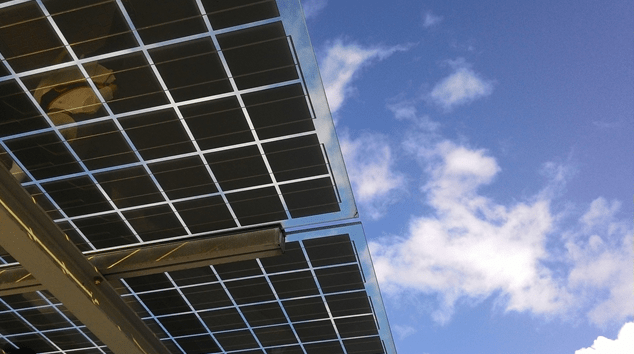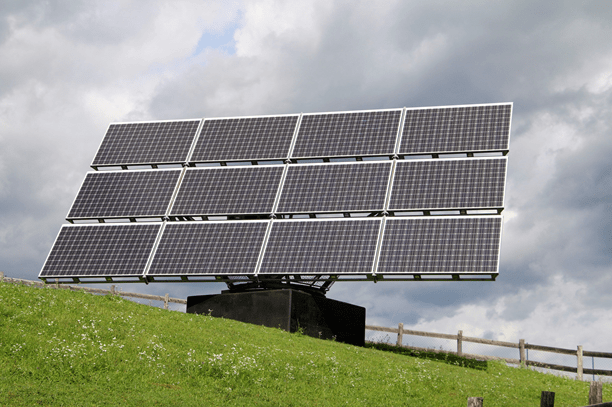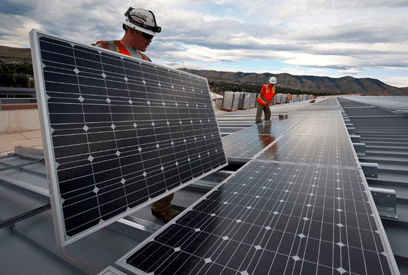Pros and Cons of Solar Energy: Discovering How Solar Energy Works
How solar energy works remains a mystery to some. It almost seems like witchcraft: the sun’s light hits a glistening, dark surface, which then creates the electricity needed to charge a cell phone, power an appliance, or even recharge a car.
But behind the magic, practical physics, and some smart engineering allow solar panels to generate electricity for your daily use at a cost, leading to various pros and cons of solar energy.
To many, the benefits of solar energy seem evident. But it’s a tough balance trying to decipher the solar energy pros and cons.
On the face of it, solar energy provides bountiful and clean energy which pays dividends over the long term. It seems the advantages of solar energy outweigh the disadvantages of solar energy.
But the solar energy pros and cons debate cannot be settled so quickly. Solar energy advantages and disadvantages need to be measured on several fronts.
The benefits of solar energy, for example, include the above-mentioned bounty and cleanliness. But the disadvantages of solar energy include a longer wait for the investment to pay off.
It’s only by parsing how solar energy works that one can fairly judge the pros and cons of solar energy.
Fortunately, we’ve put together this helpful guide that lays the groundwork for assessing the solar energy pros and cons. In it, we’ll discuss:
- How solar energy works
- The six-decade-old history of solar energy pros and cons
- The financial and ecological advantages of solar energy
- Monetary and environmental disadvantages of solar energy
- Solar energy pros and cons for homeowners
Let’s start by dissecting the history of solar energy and how solar energy works.
See Also: Top Solar-Powered Garden Lights | Solar Lights for Garden
Solar Energy Pros and Cons Throughout History
Your first encounter with solar energy may not have been too noteworthy. In fact, you may not have even noticed it though you experienced some of the benefits of solar energy. It probably happened while trying to figure out a math equation.



Pros and Cons of Solar Energy
If we want to know how solar energy works, we first have to go back to the 1950s, when the potential benefits of solar energy were first recognized.
The Bell Telephone company created the first solar photovoltaic cells in 1954, using some of the advantages of solar energy to power early space satellites. Those early PV cells, still new and filled with the disadvantages of solar energy, were favored for their portability.
Soon, broader consumer industries began weighing the pros and cons of solar energy. Having realized how solar energy works, companies assessed the benefits of solar energy and began stuffing solar cells into all manner of consumer electronics.
Companies also hoped to generate consumer interest in solar panels to power homes by the end of the decade, thinking homeowners will have assessed the pros and cons of solar energy.
By the 1970s, a number of products, from watches to calculators (hence the aforementioned math equation), began enjoying the advantages of solar energy.
The solar industry didn’t take off immediately for several reasons, all laden with the disadvantages of solar energy.
Some manufacturers even bet homeowners would weigh the pros and cons of solar energy and decide the advantages of solar energy work out in their favor. But they didn’t take into account the fear of the new. In its early stages, solar energy still seemed a space-aged technology well ahead of its time. How solar energy works still felt unreal to many.
This phobia toward the unfamiliar was one of the early disadvantages of solar energy, and it’s one still burdening the solar energy pros and cons decision today.
As with any fledgling technology, solar energy pros and cons rested heavily on its successful early execution. While useful, it was not the dependable, durable, and consistent technology we know today.
Because consumers and homeowners didn’t adopt solar energy quickly, companies had little incentive to innovate, scale up production, or compete to drive the technology forward.
As a result, the solar panels being sold today have not evolved too greatly from their ancestors six decades ago, which remains one of the disadvantages of solar energy. Aside from advancements in durability, portability, and cost, not much separates today’s solar technology from its six-decade-old ancestors.
Price remained one of the bigger early disadvantages of solar energy. The still-new technology had not scaled up for mass production, keeping prices high and the benefits of solar energy from spreading via word of mouth.
Perhaps the only groups familiar with the pros and cons of solar energy in those early days were homeowners and inhabitants of remote facilities, conducting scientific studies well off the grid and getting their power from solar panels.
These isolated situations made the advantages of solar energy hard to disseminate.
The pros and cons of solar energy weren’t judged on a large-scale level until decades later, when power companies and heavy electrical users began exploiting one of the biggest advantages of solar energy: it can be compounded and multiplied, providing energy in bulk.
Soon solar cells and panels were being arranged together into solar arrays—vast rows of solar technology supplying the advantages of solar energy seamlessly using existing electrical grids, sending power to thousands of homes.
The dawn of the electronics era also helped increase interest in the advantages and disadvantages of solar energy. Folks with power-hungry computers, phones, televisions, and a whole host of other devices needed to find efficient means of generating energy.
Many found a solution in the benefits of solar energy.
But what are some solar energy advantages and disadvantages?
Don’t Miss: Solar Energy Definition | Solar Energy Facts & Solar Energy Information
All-in-One Change Management Tools
Top Rated Toolkit for Change Managers.
Get Your Change Management Tool Today...
Advantages and Disadvantages of Solar Energy
The debate around the pros and cons of solar energy remains rooted in one simple fact: the source of the energy is free, plentiful, and somewhat reliable—depending on where you live.



Advantages and Disadvantages of Solar Energy
Weighing these solar energy advantages and disadvantages depends heavily upon the star at the heart of our solar system. The potential benefits of solar energy depend heavily upon one’s relationship with the sun—how often it appears, with what intensity, and how reliably throughout the year.
This also leads to one of the biggest disadvantages of solar energy: it only works in certain environments.
For the advantages of solar energy to fully materialize, one needs to live in a reliably sunny climate, have an unobstructed view of the sun, and enough free space to fit solar panels.
While those hurdles may not seem daunting to some, a tenant in a New York City high-rise, for example, will hardly feel the advantages of solar energy. But for those who can afford solar technology and have the funds and space to retrofit it into their homes will feel the advantages of solar energy.
The cost-benefit equation usually trumps all methods when measuring solar energy pros and cons. But the answer isn’t so clear-cut.
The advantages of solar energy aren’t distributed evenly, much like sunshine itself. A patchwork of incentives and programs covers the United States, making it difficult to give a definitive financial account of the advantages of solar energy.
For example, some utility companies in sunnier states like Arizona reimburse homeowners whose solar panels produce so much electricity that they feed leftover current back into the grid.
You may have seen reports of these homeowners touting a refund check instead of an electric bill as one of the advantages of solar energy.
Related: How to Make a Solar Cell | Guide | DIY Solar Cell



Over time, this could help recoup the investment into solar technology sooner. But these advantages of solar energy can only be applied if you have a utility company that allows you to sell energy back into the grid.
Solar technologies have also expanded beyond households and into portable variations. Newer back-up batteries and cell phone chargers, for example, exploit the advantages of solar energy to create portable, all-in-one charging stations and de facto generators.



How Solar Energy Works
But solar energy advantages and disadvantages should not only be measured in the micro, but also in the macro. More than one person can experience the benefits of solar energy. In fact, the whole planet can.
The pros and cons of solar energy also include environmental concerns. Solar energy does not, unlike classic generator technologies, produce carbon dioxide. This lowers the greenhouse gas output of society as a whole.
Solar technology also does not include many of the smog-creating contaminants and pollutants usually released by old-fashioned power plants, making an eco-friendly nature one of the advantages of solar energy.
But even when looking at the environmental impact, the pros and cons of solar energy aren’t always so clean-cut. The production of solar panels requires the use of harmful and toxic materials—a major disadvantage of solar energy for eco-conscious consumers.
When weighing the pros and cons of solar energy, it’s also important to realize the technology is land-hungry as well.
Solar panels and solar arrays can be quite demanding, requiring a suitable surface which offers the perfect angle for the sun. One of the bigger disadvantages of solar energy is this unforgiving need for suitable space, which can alter wildlife and animal habitats.
To understand more of why this is necessary and how it affects solar energy pros and cons, it’s important to understand how solar energy works.
Popular Article: How To Make A Solar Panel | Guide









From the Sun to Power Outlets: How Solar Energy Works
The debate around the solar energy pros and cons must also take into account how solar energy works.
How solar energy works at a consumer and mass-production level involves a slight lesson in physics. Solar cells convert sunlight directly into electricity by altering the atoms in a semiconductor. The minutiae of how this happens is somewhat ingenious and makes how solar energy works fascinating.
The energy we feel during daylight, as we feel it here on Earth, is actually photons being fired off from a giant ball of burning gas—our sun. (Remember, one of the biggest advantages of solar energy is the sun’s promise to stick around for quite longer than fossil fuels, which will eventually run out.)
Solar cells are made of a semiconductor material which uses the sun’s photons to dislodge electrons at one end of the panel. As this electron travels to the other end of the panel, it generates an electrical charge.
The panels create a direct current, or DC, which must then be converted to alternating current, or AC.
Some solar cells can even convert artificial light, produced by a bulb powered by solar energy, into more electricity (the circuitous nature of the technology is also one of the advantages of solar energy).
It’s important to remember, when weighing the advantages and disadvantages of solar energy, that this whole process happens quietly, with no heavy lifting or moving parts.
Perhaps one of the biggest benefits of solar energy: you hardly know it’s working.
While solar panels get all the glory, the solar energy pros and cons go much further to other lesser-known technologies.
Solar heating and cooling, for example, uses the sun’s thermal energy to control the indoor temperature of a home or building. These technologies offer many of the same low-maintenance, steady service possibilities considered the hallmark advantages of solar energy.
Read More: Types & Cost of Solar Cells | Solar Cells Advantages and Disadvantages
Free Wealth & Finance Software - Get Yours Now ►
Conclusion
Using the sun’s energy is a staple of not just human activity, but life on this planet. From photosynthesis to heat energy, nature settled the debate of solar energy pros and cons a long time ago.
Humans, however, are still weighing solar energy advantages and disadvantages. As a species, we began to understand the benefits of solar energy in agricultural endeavors and eventually created greenhouses.
But those early farmers also learned the disadvantages of solar energy, as extreme droughts and unreliable weather created an unstable crop from year to year.
The evolution from those early agricultural days to today hasn’t changed our relationship to solar energy too much. We still have to decipher how solar energy works in order to parse the pros and cons of solar energy.
The answer, as always, starts with looking up and wondering “How much more can the sun give?”
Image Sources:
- https://pixabay.com/photos/solar-panel-energy-power-918492/
- https://pixabay.com/photos/solar-cells-technology-energy-1624663/
- https://pixabay.com/images/search/solar+panels/
AdvisoryHQ (AHQ) Disclaimer:
Reasonable efforts have been made by AdvisoryHQ to present accurate information, however all info is presented without warranty. Review AdvisoryHQ’s Terms for details. Also review each firm’s site for the most updated data, rates and info.
Note: Firms and products, including the one(s) reviewed above, may be AdvisoryHQ's affiliates. Click to view AdvisoryHQ's advertiser disclosures.



